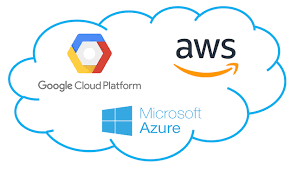What’s in a name !
When thinking about cloud platforms, someone new to the technologies may have some trouble understanding what are the similarities and differences between the cloud providers. Dont worry you aren’t the only one, I had this difficulty initially but after experience with all three cloud providers below this started to clear up and it made me realise that the cloud providers are very similar and aligned, the difference is the name each provider gives to each service and the small configuration differences.
I have created the below table to compare some of their services which I hope may clear up any confusion. This however is in no way an exhaustive list of services these cloud providers provide.
| AWS | Azure | GCP | ||
| Tools | Control Tower (uses AWS LZ, Account factory, service catalogue and more) | Blueprint (Policies, RBAC and more) | Blueprints (Policies, Guardrails and more) | |
| Structure | OUs | Management Groups | Folders | |
| Resource Containers | Accounts | Subscriptions/Resource Groups | Projects | |
| Policies | Yes | Yes | Yes | |
| Tags | Yes | Yes | Yes | |
| Native Automation | Cloud Formation | ARM/Bicep | GCloud Deployment Manager (YAML) | |
| Terraform | Yes | Yes | Yes | |
| Identity | IAM | AAD | IAM | |
| Roles & Permissions | RBAC | RBAC | RBAC | |
| Networking | VPC | VNET | VPC | |
| Security/ FW | Security Groups | NSGs | Firewall/Service Controls | |
| Private Endpoints | Yes | Yes | Yes (PSC) | |
| Connect to on-prem | Direct Connect, VPN | Express-Route, VPN | Interconnect, VPN | |
| Storage | S3 | Blob Storage | Cloud Storage | |
| Logging | Central | Central | Central | |
| Shared services | Yes | Yes | Yes |
Hope this has helped and if you have any questions or anything to add please comment below 🙂

